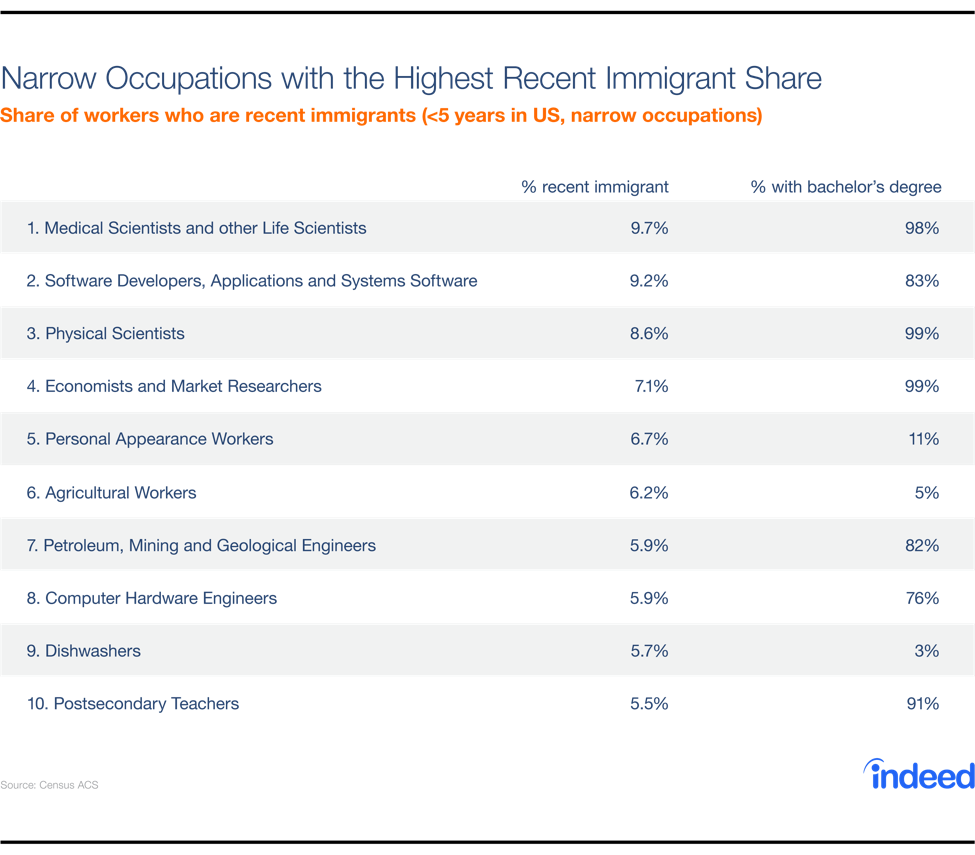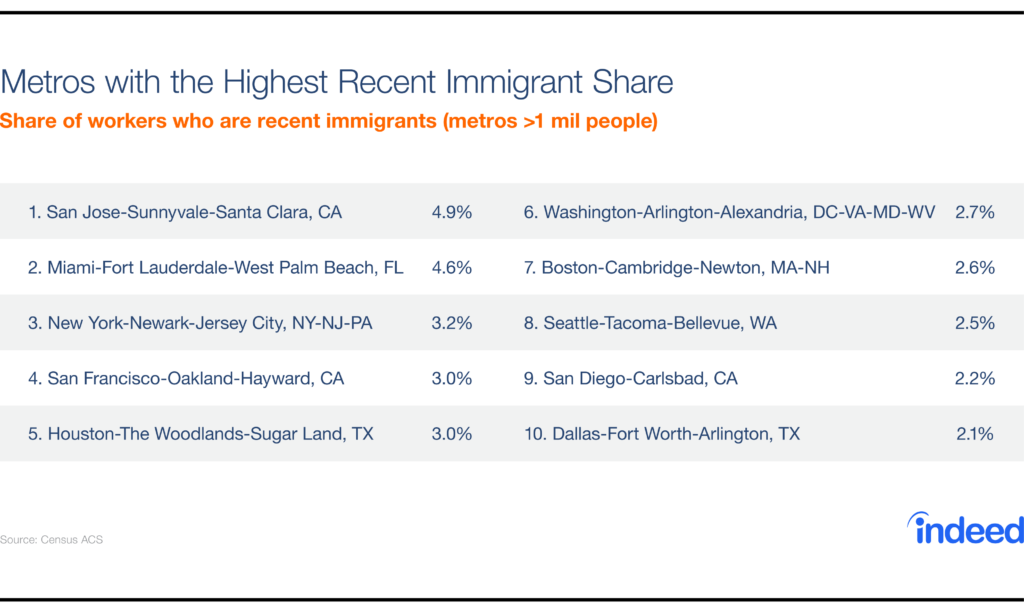Immigration was one of the most divisive issues in the presidential campaign and is high on the list of President Trump’s priorities. As immigration reforms are proposed and debated, it will be crucial to consider the long-term ramifications for immigrants, as well as for the broader economy, the workforce, and employers.
In recent research, I looked at the jobs immigrants are currently doing, with a special focus on more recent immigrants. I used the Census’s American Community Survey, which asks respondents about their employment status, occupation, birthplace, and citizenship, among many other topics.
The key findings are that, compared with earlier immigrants, those who have been in the U.S. less than five years are more educated, more likely to come from Asia rather than Latin America, and less likely to work in occupations where they might compete directly with the native-born workers who were most supportive of Trump.
The Present and Future of Immigration in the U.S.
Among broad job sectors, immigrants make up the highest share of farming, forestry, and fishing occupations, accounting for 46 percent of those who work in those jobs, compared with 17 percent of the economy overall. Immigrants also constitute 35 percent of buildings and grounds cleaning and maintenance workers and 28 percent of construction workers.
It turns out, however, that immigrants who have come to the U.S. in recent years differ in important ways from earlier arrivals.
First, they come from different countries: among all immigrants in the U.S. today, half were born in Latin America, including the 27 percent who were born in Mexico. But among those who came to the U.S. in the past five years, only one third were born in Latin America, and 12 percent in Mexico. Immigrants are increasingly coming from Asia: 45 percent of recent immigrants were born there (especially India, China, and the Philippines), compared with 30 percent of all immigrants. (These figures refer to adults age 25 and older, surveyed in 2015.)
Even more striking — and important for the job market — recent immigrants are much more likely to have a bachelor’s degree than earlier immigrants. Among immigrants age 25 and older residing in the U.S. in 2015, 48 percent of those who arrived after 2010 have a bachelor’s degree, versus 35 percent of those who arrived between 2006 and 2010 and 27 percent of those who arrived in 2005 or earlier. By comparison, 31 percent of native-born adults have a bachelor’s degree.
These demographic differences translate to occupational differences. Among broad sectors, farming, forestry, and fishing remains on top. But the next two sectors where immigrants account for the highest share of workers are computer and mathematical occupations and life, physical, and social sciences.
Among specific occupations, the four in which recent immigrants are most prevalent are all professional or technical jobs: medical scientists, software developers, physical scientists, and economists. In 7 of the top 10 jobs with the highest share of recent immigrants, the vast majority of workers have a bachelor’s degree, compared with none of the 10 jobs with the highest share of immigrants overall.

Immigration and the Labor Market
The characteristics and occupations of recent immigrants are an important guide to the potential effects of future changes to immigration policy: all else being equal, immigrants in 2017 will look more like those who came to the U.S. in 2016 than those who came in — for instance — 2002 or 1986. The most recent immigrants, however, are not necessarily those most likely to be unauthorized and therefore affected by changes to deportation policies, though they could be directly affected by changes to H1-B visa rules.
These shifts could have important implications for immigration policy and politics in the U.S. First, recent immigrants are less likely than earlier immigrants to be competing (or, at least, to be perceived as competing) for jobs with those who were among the strongest Trump supporters — native-born white men with a high school degree or less.
Second, recent immigrants are settling in different metros than earlier immigrants did. Whereas Miami has a higher share of immigrants overall than any other large metro, San Jose is tops (Miami is No. 2) for recent immigrants. Three of the top 10 metros for immigrants overall — Los Angeles, Riverside-San Bernardino, and Las Vegas — are not among the top spots for recent immigrants: Boston, Seattle, and Dallas have taken their place.

More recent immigrants, therefore, are likely to live in more expensive metros that offer more professional jobs than earlier immigrants did.
These changes in who immigrants are, where they live, and what they do will affect the politics of immigration in the new Trump administration. The employers who oppose restrictions on new immigrants will increasingly come from technical industries and research organizations. Some workers might feel less personally threatened by immigration than in the past, while others might feel more so. With immigration a top priority for the new administration and Congress, it should soon start to become clearer how policy changes will affect the work that immigrants do.
